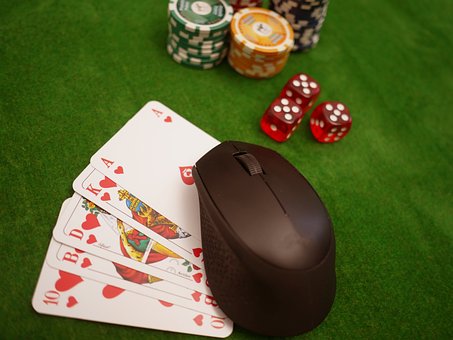Poker players are now moving from poker in physical casinos to online poker rooms. As a result, the strategies used in bluffing are also changing. Here are some virtual psychology techniques you can use to bluff your opponents in an online poker game.

Slow-Play Bluff
Slow-play bluffing is one of the most popular poker techniques experienced players use when playing online poker games. It’s a clever and creative approach to gain an advantage over opponents while playing poker online. A Slow-play is done by playing a strong hand weakly.
The player is trying to fool their opponents into thinking they have a weaker hand than they do. This makes their opponents believe that their hands are better than the player’s, thus making their opponents commit more chips to the pot.
Fake Tells
One of the best poker bluffing techniques for when players play poker online is fake tells. Tells are behaviors or mannerisms designed to give away information about a player’s hand strength or intentions. Playing on poker sites can make it harder for other players to interpret these tells since they may not be visible in person.
Therefore, by intentionally creating and displaying false tells, players can deceive their opponents and make profitable bets. Some ways to use fake tells when playing online are making small talk in the chat box, pretending to be distracted, or activating an auto-fold button.
Players need to be careful, though, and not create too many false tells, as this could result in other players catching on and using it against them. Playing poker online can become exciting and rewarding by using fake lies and bluffing.
Check-Raising
Check-raising is one of the most popular and effective online poker bluffing techniques. This move often works best when used with a player’s position on the table. The primary intent of a check-raise is to surprise your opponents and give them the impression that you are weak, where they will bet less.
By checking, players essentially avoid calling out bets representing strength. This helps control the pot size before attempting a bluff raise. However, players should be careful not to overuse check-raising as their opponents may quickly become aware and anticipate this bluff!
Used sparingly, it can still provide savvy players an edge in tricky situations that could otherwise lead to a missed opportunity for success.
Overbetting
Overbetting can be a potent tool when used correctly in online poker. It involves betting a large number of chips more significantly than the usual amount of chips to represent a more robust than normal hand.
It is particularly effective for players with strong reading skills and can assess when their opponents are most likely weak and vulnerable. This bluffing can force the opponent to make mistakes and fold or call wrongly due to fear of the perceived strength of the oversized bet.
Using overbets in the least expected situations will throw the player’s opponents off balance and give them an advantage by making their opponents question their own decisions.
Bait Betting
Bait betting is a common poker bluffing technique that involves making an unusual or out-of-context bet to make other players believe they have a better hand than they do. This technique is often used when a player has a weak or marginal hand but wants to encourage others to call or raise their bet.
It works by making an initial bet that appears strong and then immediately reraising after an opponent calls the original bet. This will give your opponents the impression that you have a strong hand, while in reality, you may have nothing more than a bluff.
Bait betting can be highly effective if used in moderation and with careful discretion. If done wrong, however, it could cost valuable chips!

Float Bluffing
Float bluffing, also known as “floating,” is a poker bluff that involves calling an opponent’s bet to bluff on the turn or river. This move works best against opponents taking a position and betting aggressively with marginal hands.
By float bluffing, you can represent strength by “catching” their bets even though you may not have anything substantial in your hand. Float bluffs work well because they often catch your opponents off-guard and put them in uncomfortable positions for fear of facing another bet or call on future streets.
However, this technique requires careful assessment of your opponent’s strategy, which could be costly if not executed correctly.
Isolation Bluffing
Isolation bluffing bluffs out weaker players by raising pre-flop and then betting post-flop. This is typically done when a player has a strong draw, such as an open-ended straight or flush draw.
The raiser should try to isolate the weaker players to push them out of the pot and take it down with their strong hand. It works best in multi-way pots where there are lots of players giving action on the flop.
Isolation bluffing can be very effective if used carefully and sparingly, as opponents may quickly become aware of this move if overused.
Reverse Bluffing
Reverse bluffing is an often overlooked poker technique that can be used to significant effect online. It is essentially a type of semi-bluff that involves betting or raising with an average or weak hand to make your opponents think you have a strong hand.
This move often works best against players trying to bluff, as they will be less likely to call if they think you have a superior hand. It can also work effectively against players who slow play premium hands, such as pocket Aces and Kings.

Conclusion
Successful bluffing requires a combination of skill, intuition, and psychological manipulation. While it can be risky if done incorrectly, it can also be an effective way to increase a player’s success rate in poker if they use the techniques wisely.
The key is understanding when to use each type of bluff effectively so that players can maximize their profits while minimizing losses. With practice and experience, players may become master bluffers at poker games online in no time!